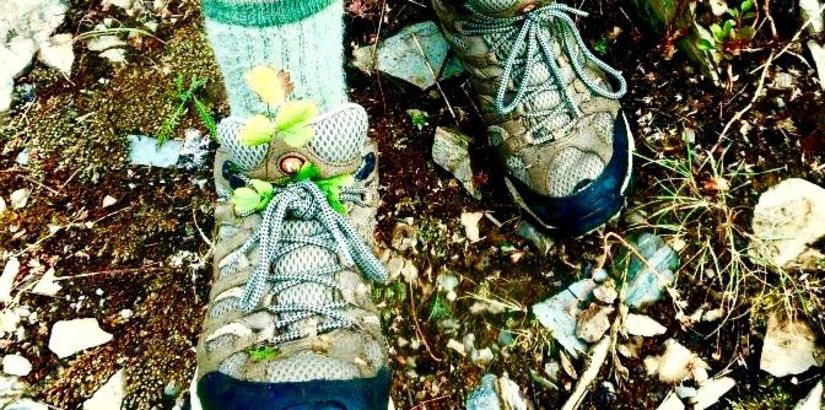The Five Most Common Outdoor Gear Storage Mistakes (And How to Avoid Them)
Whether you want to thru-hike the whole Appalachian Trail or simply turn that hungover Sunday morning walk in the park into something that you do in the actual forest, there’s no underestimating the importance of quality gear. You’ve come a long way since the days of Wal-Mart backpacks that fall apart after a week. Now that you’re dropping a month’s worth of rent on a tent (which ironically will come in handy if you’re actually evicted from your apartment as a result), it’s time to start treating your outdoor gear like the investment it is. Take good care of that pricey down jacket and it’ll keep you warm on high altitude hikes for years. Do the opposite and find yourself shivering on the summit of Mt. Whitney during the shoulder season.
You already know how to take care of your gear when you’re in the backcountry, but what about when you’re not using it? Unless you’ve got your own personal REI, all of that stuff can really take up valuable real estate in your closet. Get a month-to-month lease at a self-storage facility to give those items their own space and then learn from the worst by reading up on the five most common outdoor gear storage mistakes and how to rise above:
Mistake #1: You Never Clean It
After a soggy, miserable weekend of camping in the rain, it’s natural to want to dump your stuff on the floor and collapse in your bed. Resist the temptation. The more you forget to clean your gear or promise yourself you’ll do it next time, the more you compromise its longevity. Putting dirty, potentially wet gear into storage is practically a death sentence. Even if you’re religious about cleaning your stuff after every trip, it’s still important to give each item a little TLC before putting it in your storage unit. If you only take away one thing from this article, let it be this: Be gentle when cleaning your gear. That means fragrance free soap (an outdoor specific one like Nikwax Tech Wash works great), soft toothbrushes and sponges without the rough side. If you’re questioning whether or not something should be machine washed or hand washed, err on the side of caution and wash it in your bath tub. Call us paranoid, but we’re a big fan of not trusting product labels. Even if a sleeping bag’s manufacturer gives you the green light on tossing it in your washer, that top-loading machine might destroy it. Wash your tent by hand with a hose, then remove extra dirt with a sponge and cold water. Rinse it by hand, hang it to dry and then set it up to make sure it’s really, totally, absolutely dry. For sleeping bags, hand wash in a bathtub. Rinse, rinse and rinse again and then air dry. Consider a sleeping bag liner to minimize your funk in the future. For that trusty old backpack, vacuum out the dirt, crushed trail mix and other debris we shudder to think about and wash it by hand in cool water. Once again, air drying is your friend.Mistake #2: You Don’t Let it Breathe
The feeling after you buy your first zero degree sleeping bag is pretty epic. At last you can plan that winter backpacking trip, or at least be a little less whiny on your summer camping trip to northern Montana. But after a few uses, it suddenly seems less warm. Have you been ripped off?
The truth is, when you compress a sleeping bag, it loses loft along with its ability to stay true to its rated temperature. If you shove your sleeping bag into a stuff sack and put it in storage for a few months, it won’t do a good job of keeping you cozy on your next camping trip. Instead, put the sleeping bag into a large laundry bag or a trash bag so that it can stay nice and loose while it’s in your storage unit. Be sure that you don’t store your self-inflating sleeping pad in its compressed state either. Doing so will negate the whole self-inflating thing and force you to blow it up yourself the next time around. This might not sound like a huge inconvenience, but the air from your lungs can actually cause moisture to get inside the pad which can shorten its lifespan. To avoid this, store the sleeping pad flat with the valve open. Don’t store that tent in a stuff sack either as this will potentially trap moisture and cause the dreaded drip-drip-drip scenario of a tent that’s losing its waterproofing. And speaking of moisture, avoid potential rainwater damage to gear in your storage unit by hanging items like backpacks and climbing gear from carabiners and purchasing a cheap, plastic card table to place your sleeping pad and other items on top of.Mistake #3: You Create Fire Hazards
We’re eternally grateful for the items that give us the ability to have hot, delicious food in the middle of nowhere. That being said, when you have to store that backpacking stove or any other camping cookware, make sure to remove dangerous chemicals like propane. There’s a reason most storage facilities don’t allow you to store flammable items and it’s pretty simple: Extreme heat plus propane equals disaster. The same goes for bear spray. If you’re unfamiliar with the product, it’s a super intense mace that (hopefully) repels rampaging grizzlies. If you know it well, make sure you don’t have a can of it in your backpack when you put your outdoor gear into your storage unit. Unless you’re planning on driving by your storage facility every day to make sure it hasn’t gone up in flames, take the time to remove fuel (and while you’re at it, remove the batteries from your headlamp to prevent corrosion). There are better ways to meet firefighters, we promise.




